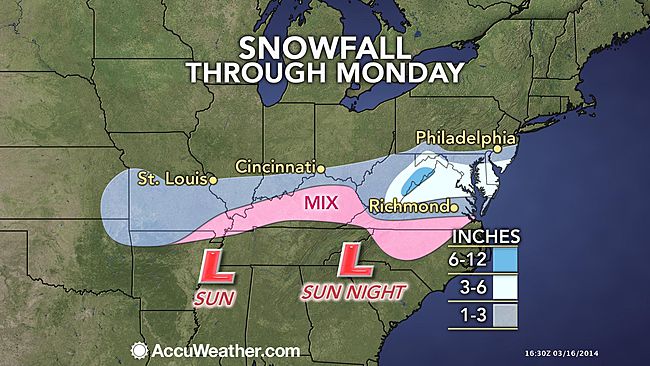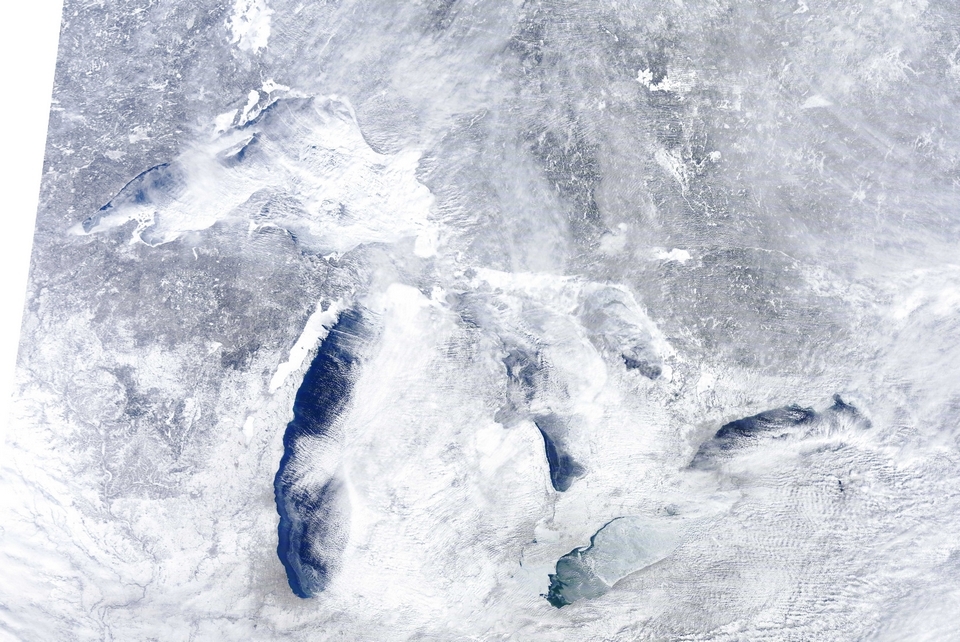Spring officially starts on Thursday, but Mother Nature will bring another blast of winter weather from Missouri to Delaware before the seasons change.
A winter full of nasty snow and ice will not end quietly as a gathering storm slides east and collides with a fresh cold air mass on Sunday into Monday.
Across the South, the focus
will be on severe weather. Farther north, a wintry mess will quickly unfold into Monday.
As yet another push of cold air drives southward across the Midwest and Great Lakes, moisture will surge northward. A swath of snow and sleet is expected to develop from Missouri eastward along the Ohio River on Sunday.
While the precipitation may start as a brief period of rain, the arrival of cold air should allow the majority of the precipitation to fall as snow or sleet in cities such as Springfield and St. Louis, Mo., Louisville, Ky., and Cincinnati, Ohio.

© AccuWeather.com
East of the Appalachians, the most treacherous conditions are expected on Sunday night through the morning commute on Monday as temperatures fall below freezing.
Snow and ice should extend along the Ohio River and then across the Mason-Dixon Line by Monday morning and even reach places as far south as the North Carolina/Virginia border.
Most places in this band can expect enough snow to shovel with some spots in the mountains of West Virginia and Virginia picking up around a half foot of fresh snow.
Since much of the snow is forecast to fall at night in locations such as Baltimore, Md., Washington, D.C., and Charleston, W.Va., roads can quickly become slick and snow covered. Conditions for Monday morning's commute will be poor.


Comment: When the mainstream media has to work so hard to bolster one side of a debate, while suppressing the other side, it's clear that we are facing a propaganda operation and that the truth is being purposely hidden.